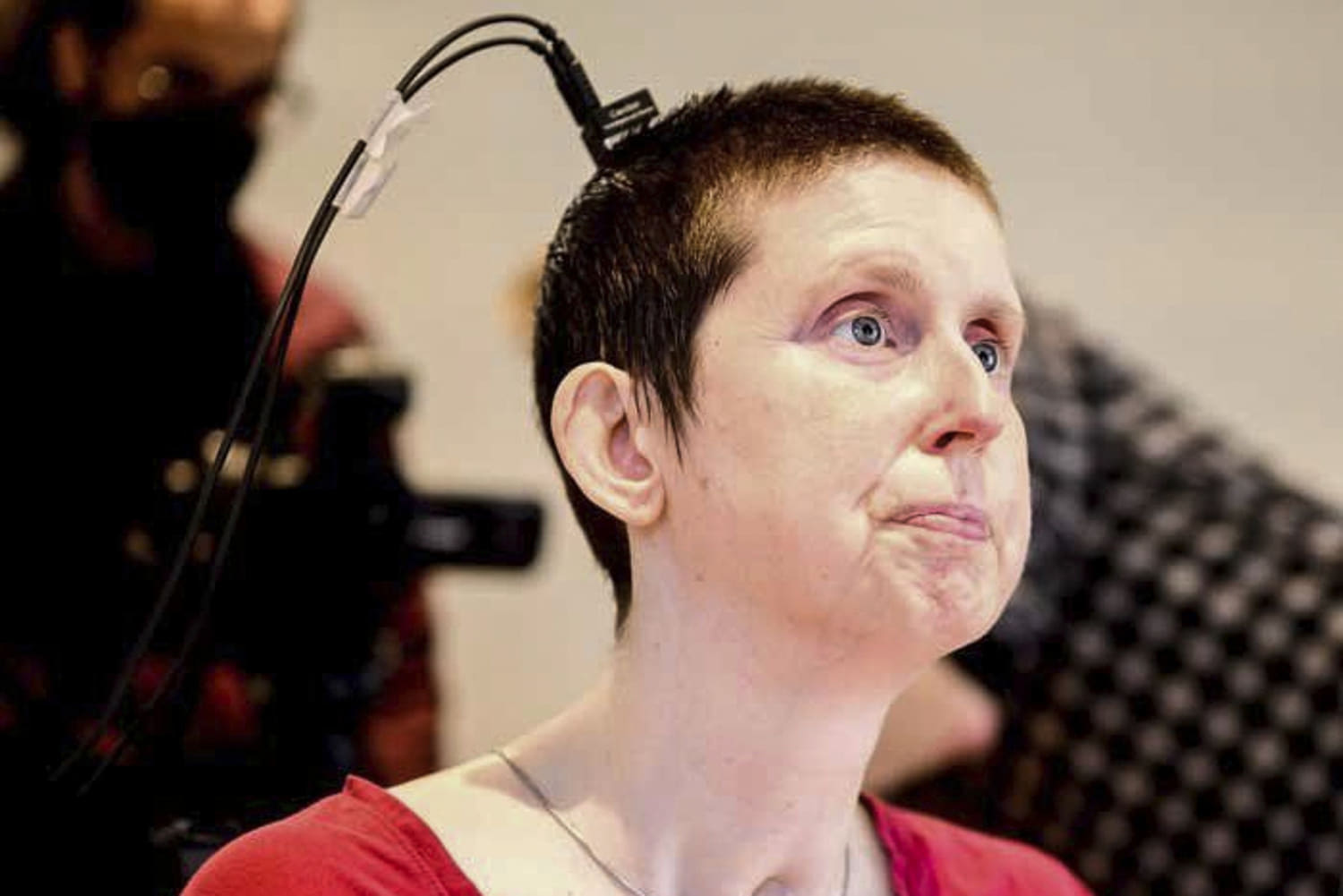KFF Health News gives readers a chance to comment on a recent batch of stories. Mental Health, FDA, Letter To The Editor, Nutrition KFF Health News
Letters to the Editor is a periodic feature. We welcome all comments and will publish a selection. We edit for length and clarity and require full names.
What’s Up With Our Wheat?
Great article (“How the FDA Opens the Door to Risky Chemicals in America’s Food Supply,” March 10). Another topic that needs more research is the fact that the FDA allows glysophate to be sprayed on wheat for human consumption to kill it off before harvest. It is then harvested seven days later and processed for food. In beans and corn, it is applied months before the food portion is developed, so it’s not as big of a concern. The question would be: How much residual glyphosate is still in the wheat when harvested? Does the FDA know, or care? What are the health ramifications?
— Irving Geary, St. Croix Falls, Wisconsin
A small farm in North Carolina’s Forsyth County that shuns herbicides, pesticides, and chemical fertilizers shared the article on the social platform X:
What reasonable (not corrupt) person thinks it’s a good idea to let food companies determine whether their ingredients & additives are safe. Companies don’t have to tell the FDA about those decisions, and they don’t have to list all ingredients on labels. https://t.co/ndRTNXDKmD
— Amber Lake Farm(stead) 🕊️ (@AmberLakeFarm) March 13, 2025
— Amber Lake Farm, Lewisville, North Carolina
CT Scans, Done Safely, Are Worth the Radiation Risk
Together with our colleagues, we read with great interest your recent article “Some CT Scans Deliver Too Much Radiation, Researchers Say. Regulators Want To Know More” (March 12). We share the crucial concern of patient safety, a mandate that has driven and can further drive technological innovation in imaging. But we note that there is an even more important mandate that should concern us all: imaging benefit.
We believe that the article overemphasized the risk associated with medical radiation exposure, and that such a fear-inducing approach to radiation protection is harmful to patients. We agree that extra care should be exercised when prescribing a diagnostic imaging study, especially in vulnerable groups, like pediatric and pregnant patients. However, once an exam is deemed medically necessary, its benefit is already judged to outweigh any potential risk. With the justification of the exam settled, the main challenge is how to perform the exam as best as possible for the medical need at hand. In that task, prioritizing radiation dose reduction over other considerations can potentially be detrimental to the patient. Radiation safety is a priority but only together with the quality of the diagnostic information for the clinical need.
We recently published a study in Nature Communications Medicine on a population of 1 million digital twins simulating the U.S. population, and we found that the clinical benefit associated with a radiological procedure largely outweighs the radiation risk, by at least a factor of 4. The finding, that the benefit of detecting a problem is worth the small potential risk of radiation, is contrary to common belief. This study shows that putting so much emphasis on radiation safety to the tune of avoiding exams or reducing dose to make the exam “safe” would make the overall procedure less safe by negatively impacting patients’ path of care. Exaggerated dose reductions can harm patients. That is not safe!
Diagnostic imaging exams are prescribed with the specific purpose of finding information that’s essential in improving patient’s life, and to diagnose or rule out pathologies. As health care professionals, it is our duty to offer the best care to patients, and to achieve the best diagnostic performance while exposing patients to the lowest risk possible. Excellence does not arise from spreading irrational fears. Excellence can be attained only with the careful assessment and balance of risks and benefits. And the successes of modern medicine are the irrefutable proof of the irreplaceable diagnostic imaging benefits.
— Francesco Ria and Ehsan Samei, Duke University Health System, Durham, North Carolina
A reader who manages a website predicting the collapse of the American health care system commented on X:
It’s careless work. This is more sobering proof of the huge management knowledge gap that’s ruining US healthcare from within. Medical errors are the same carelessness that is killing more than 400K patients each year, harming millions, and costing about $80 billion annually.
— Francis Anthony Toto (@francisatoto) March 12, 2025
— Francis Anthony Toto, San Diego
I’d Take Mushrooms Over Pills Any Day
Your article “The Colorado Psychedelic Mushroom Experiment Has Arrived” (March 24) states: “Psychedelic mushrooms and their psychoactive compound psilocybin have the potential to treat people with depression and anxiety, including those unresponsive to other medications or therapy.”
In my experience, they work for a couple of months after just one use, and they do not have the lasting side effects of prescription drugs, which rarely work as intended for depression or anxiety. I wish I had been given the option of microdosing mushrooms instead.
I’ve never met an antidepressant that worked for me and didn’t require multiple other medications to offset the side effects of the first pill, and it took two weeks or more to start working. Then, another 30 days or more are required to stop the ill effects, and you figure out that the side effects are far worse than any benefit.
You can’t just stop taking the pills, or you risk psychosis. Been there, done that. The type of craziness these pills unleashed on me and my family was due to my having to stop them abruptly, leaving scars on our entire family. Following the doctor’s advice to start antidepressants is the biggest regret of my life.
— Lori Muir, Helena, Alabama
I could become a psychedelic healer. Vermont is not good for my head. https://t.co/ee3q3pw1eQ
— Cassandra Carbee (@blackeyedcat69) March 20, 2025
— Cassandra Carbee, Wells River, Vermont
What’s in a Name?
What does KFF stand for? Is it Kaiser Family Foundation? Something different? I just want to understand what KFF stands for. Thank you.
— Margaret Chinn, Alameda, California
Editor’s note: Years ago, the organization was known as the Kaiser Family Foundation, but since it’s not part of Kaiser Permanente, nor a foundation, and doesn’t make grants, it’s clearer to simply say KFF, which is how many people already know and refer to it. KFF is a unique health policy information organization that brings together policy research, polling, journalism, and public information campaigns. KFF Health News is one of its core programs. You can read more about the organization’s history here.
Three Timely Levers for Addressing Disparities in Cancer Care
Over the past decade, the United States has witnessed a revolution in the development and approval of cancer-fighting drugs. From 2017 to 2021, the FDA approved an average of more than 50 new cancer drugs each year — an increase of about 40% from the previous five years. FDA approvals for cancer treatments are expected to accelerate as artificial intelligence further speeds up drug discoveries and trials.
While this rise in treatments is promising, disparities in access to cancer care are widening.
As foreign-born cancer doctors from low-income countries who have practiced in both urban and rural areas in the U.S. for nearly three decades and are particularly sensitive to equity issues, we call on the U.S. medical ecosystem to work toward eliminating disparities in access.
These new drugs provide hope for the 2 million Americans diagnosed with cancer each year and their loved ones. Thanks to the dedicated and brilliant researchers, pharmaceutical companies, and funders — including nonprofits and government — for identifying and rigorously testing these novel drug discoveries.
Given the rapid increase in FDA-approved drugs, we must now work toward ensuring that these breakthrough treatments improve outcomes for all patients. This is not a given. Especially in the U.S., which suffers from great disparities in access to quality cancer care and outcomes.
Rural, low-income, and minority patients typically experience cancer at a higher rate, receive a diagnosis at a later stage, and face geographic and financial barriers to accessing cutting-edge, quality care.
At the moment, the most powerful three levers for addressing these unconscionable disparities lie in Washington, D.C., not your doctor’s office.
First, it is critical for the Trump administration to expand, not roll back the Affordable Care Act, also known as Obamacare, which has played a crucial role in reducing disparities by expanding Medicaid in rural and poor communities and ensuring coverage for preventive services. If the ACA is trimmed or eliminated, we can expect cancer disparities to grow quickly and dramatically.
Second, Congress must act quickly to permanently extend the coverage of telehealth and telerehab services, which can help patients in rural areas access equitable, convenient cancer care and support cancer survivorship. Medicare coverage for telehealth, which was extended during the pandemic, was set to expire this month.
Third, counterintuitively, the exponential rate of innovation in the cancer drug development sector is itself a threat to equity. The American Society of Clinical Oncology has warned, “Rapid advances in cancer care will worsen existing disparities in outcomes for rural patients.”
That’s because new treatments are more quickly integrated into standard care regimens in large cancer centers in urban areas — accessed by higher-income patients. The government needs to prioritize addressing the systemic knowledge gaps and economic factors that drive these disparities and initiate preventive and corrective measures.
We know this will take time to untangle. But our leaders in Washington, D.C., can protect the ACA, support telehealth and telerehab, and lead the way toward reimagining the health system that delivers lifesaving care for us all.
— Binay Shah, a Seattle-based hematologist-oncologist and the co-founder of the nonprofit Binaytara, and Manish Kohli, a professor of oncology at Huntsman Cancer Institute
KFF Health News is a national newsroom that produces in-depth journalism about health issues and is one of the core operating programs at KFF—an independent source of health policy research, polling, and journalism. Learn more about KFF.
USE OUR CONTENT
This story can be republished for free (details).









